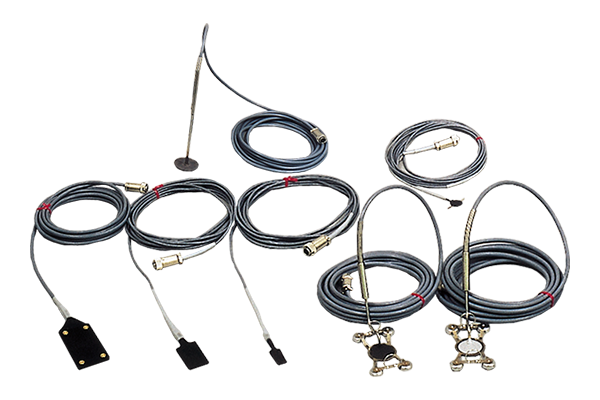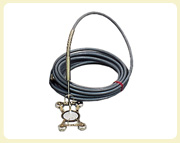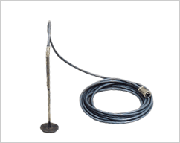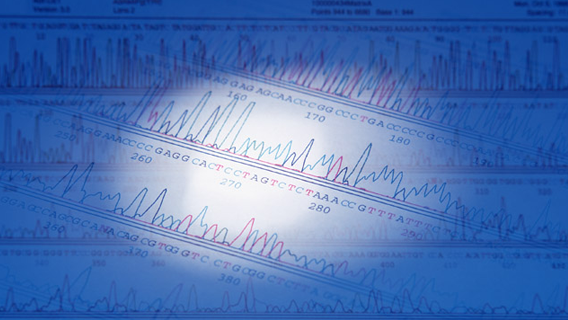Principles

Heat Flow Sensors

Heat Flow Sensor Principlestroduction
This device can measure by sensing the temperature difference resulting between the sides of flat, thermally conductive surface when heat flow (heat energy) passes through it.
As shown in the figure, a thin plate with a thermal conductivity of λ(W/mK or kcal/mh°C) and a thickness of d (m) is placed in contact with a heat radiating surface, a heat flow (W/m2, kcal/m2h) which goes through the thin plate after it reaches equilibrium can be found by the following method:
Q=(λ/d)・⊿T
Where ΔT = Temperature difference between two sides of the thin plate, and λ and d are known values, Q can be found by measuring ΔT
The heat flow sensor is made of a thin material with a low thermal conductivity, and its differential thermocouple has multiple contacts to improve its overall sensitivity.


Standard Heat Flow Occurrence Device
The speed of heat flow (W/m2) can be found from the accurate occurring heat amount and radiation surface area, which are found from the voltage and current given by the main heater.
To prevent the invasion or loss of heat from sources other than the radiating surface, complete insulation is realized by monitoring the heat flow and heating with a backup heater, thereby guaranteeing the radiation surface.


For example, if a heat flow sensor is placed on a standard heat flow surface of 100W/m2 , if the heat flow sensor output is 2mV,
Where Q=α・ΔT
100W/m2=α・2mV
α=50W/m2/mV (sensor constant)
When measurement is made with the constant of this sensor,
Where ΔT=10mV
Q=α・ΔT=500W/m2
Heat flow sensor calibration
As previously stated, calibration is performed by the standard heat flow device, finding sensor constant α.
Actually, the sensor constant has the heat flow proportion value A and shift value B, and further, value B is a function of temperature.
At KEM, we attach the A constant and B constant values for each sensor with a managed standard heat flow occurrence device installed in a constant-temperature room.
Approximate heat flow values
| Human body | 80~90 |
|---|---|
| Heat of the sun | 460 |
| Refrigerator | 17~23 |
| Iron alloy electric furnace | 2300~3500 |
| Blast furnace | 3500~4600 |
| Building | 6~12 |
| Insulated steam line | 350~460 |
| Geothermal heat (normal) | 0.042 |

Heat Flow Measurement Error
Heat flow value can be obtained by simply touching the heat flow meter sensor to the substance being tested. However, to obtain a more reliable value, there are several points when operating:
The following may lead to error:
1) sensor attachment
2) wind
3) radiation rate
4) heat conduction λ of the substance being measured
5) heat conduction λ of the backfill in embedded sensors
Heat Flow Measurement Error [sensor installation]
Affixed-type sensors are applied to avoid any air pockets between subject material and sensor. Please use adhesive sheets “HA2-H” or “HA2-L” in affixing the sensors.

Heat Flow Sensor Error [wind]
It is well-known that heat flow can change due to wind, but trouble also occurs due to change in film resistance.
Because the sensor reads oversensitively to extreme changes, it shows fluctuations larger than the actual heat flow change.
Therefore, the average capability is attached to the device. Also, with a steady wind (or average wind speed), the device will display a value that differs with the actual heat flow.
This is a result of the difference between the transfer constant of what is being measured and that of the sensor.
Generally, the indication is larger because the sensor transfer constant is greater.
Heat Flow Sensors

TR Heat Flow Sensor
[Features]
Highly sensitive and precise measurement can be made even with low heat flow of approximately 10kcal/ m2h. With flexibility, sensor can be affixed to bowed surfaces easily.
[Uses]
Low heat flow Measurement of heat loss in insulated lines, building heating characteristics testing (for energy conservation), can be installed in insulation material or embedded.

TM1 Heat Flow Sensor
[Features]
Same capability as TR Heat Flow Sensor Can handle measurement in small spaces that the TR Heat Flow Sensor
[Uses]
Low heat flow Measurement of heat radiation in organisms or small machine parts

T500B,S Heat Flow Sensor
[Features]
Can be continuously used on hot surfaces of even 500°C Has many uses, from energy conservation to operation management of furnaces
[Uses]
Surface high heat flow Such measurements as heat radiation in high-temperature surfaces of electric furnaces

TW Heat Flow Sensor
[Features]
Heat flow measurement can be performed on such normally difficult surfaces as water-cooled surfaces. Excellent against corrosion, can even be used in seawater.
[Uses] Heat radiation on water-cooled surfaces Heat flow measurement of water-cooled furnace walls

T750 Heat Flow Sensor
[Features]
Can be continuously used on hot surfaces of even 750°C
[Uses]
Underground high heat flow Measure heat traveling through embedded furnace materials, insulation inside solids, etc.

Heat Flow Sensor with Heat Sink
[Features]
Matched with the TR Heat Flow Sensor, it can measure the heat amount received from the surface opposite the Heat Flow Sensor hemisphere by pointing the receiver toward the heat source
[Uses]
Non-contact heat receiving Measure incident solar radiation, heat receipt distribution on overheated furnace inner walls, etc.




